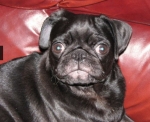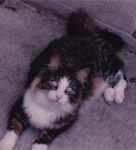PhotoWolf wrote: ↑Wed Oct 16, 2024 8:26 pm
They also posted the full study results to my patient portal account, so I have the whole thing as a pdf.
If you want our opinion on the sleep study report, you will need to block out the personal information and post an image of the pdf pages.
I lack the expertise to understand all of it, but three essential points come through loud and clear:
- 1. the in-lab study confirmed the results of the home study: I have a LOT of trouble with breathing while I'm asleep. In fact the in-lab results were worse: where the home study concluded I was having sixty-odd "events" per hour, the lab study AHI was 87. I have reason to think that was somewhat exaggerated by the test conditions, but even if it was, it's still an awful score.
A home test with 60+ events per hour and a lab study with an AHI = 87 both say loud and clear: You have severe obstructive sleep apnea. Even if the lab test conditions somehow exaggerated the situation, it didn't quadruple the number of events per our.
- 2. To quote the report, I "did not tolerate cpap well." I need a nose-and-mouth mask due to chronic sinus congestion, so they used what I believe was a ResMed F20 AirFit mask. I could handle it okay at low pressures, but as the pressure increased so did the discomfort. We tried the test cycle twice, and both times I gave up at a setting of around 20. It felt like facing into a strong wind (>25mph at least) with my mouth wide open and unable to close it. And any movement made the mask start leaking. At one point it was leaking on both sides of my nose, with the airflow blasting straight up across my eyes. Completely intolerable. I can't imagine being able to sleep like that.
There's a lot to unpack here.
First: You had a trial on CPAP that lasted maybe all of 4 hours in a lab situation. Just like you suspect the lab setting of the diagnostic half of the test may have exaggerated the AHI, the lab setting for the titration may have caused additional problems with "tolerating" CPAP.
Second: There are plenty of people here with chronic congestion problems who use nasal masks or nasal pillows masks successfully. In other words, neither the doctor nor the tech nor yourself have any idea of whether a nasal mask or a nasal pillows mask would have been easier for you to tolerate. The questions that need to be answered before dismissing the idea of a nasal mask outright include:
- Do you mouth breathe consistently during the daytime? If not, then there's a good reason to believe that you won't necessarily mouth breathe in your sleep.
- Can the nasal congestion be treated through using things like Flonase and/or saline nasal sprays and/or a neti pot (nasal rinse)? If so, are you willing to do that in order to use a nasal mask?
- If you sometimes mouth breathe for long periods of time, are you willing to consider taping the mouth or using a chin strap?
Third: You said they did the test cycle twice and you could not tolerate a pressure of 20cm. There was no good reason for running the mask fit test while having the pressure increase to 20cm. Most people do not need pressures that high. Many people, even those with
severe untreated OSA need pressures that are much more modest (i.e. around 10cm) to sufficiently control their OSA. Also worth pointing out that almost everybody feels like there's a gale force wind blowing at their face the very first time they put on a CPAP mask---even if the pressure is quite low. But most of us do manage to get used to the feeling after using a mask for a while.
Fourth: If any movement triggered leaks, then the mask was simply not fit correctly. Yes, you would think the techs running these sleep tests would have a decent handle on how to fit a mask. But many (most) of them have never worn a CPAP mask themselves and most of them haven't actually read the fitting instructions for the mask they hand the patient. The ResMed F20 AirFit mask uses an air cushion to seal the mask. A common mistake in fitting the mask is to over tighten the straps: Over tightening the straps prevents the air cushion from fully inflating, and a cushion that is not fully inflated is far more prone to pesky leaking whenever you move around in bed. And yet, far too many techs simply tighten and tighten and tighten the straps over and over when leaks are present.
Fifth: A properly fit mask should not blow air directly into your eyes. It could also be the case that the tech used a mask that was the wrong size for your face. Also, nasal pillows masks and hybrid masks may be less prone to leaking around the top allowing air to blow directly into your eyes.
- 3. Also quoting the report, "A therapeutic pressure was not achieved due to treatment emergent central apnea and intolerance. The PAP AHI=72 including CAHI=41 and lowest oxygen saturation = 81%." If I understand that right, it means that even at a higher pressure than I could tolerate, it wasn't doing me any good.
What you have left out is this:
- What were the pressures that were actually tried during the CPAP trial? And what pressure led to the smallest AHI even if that AHI was not particularly great?
- At what pressure did the treatment emergent central apneas start? (They are usually absent in pressures that are less than 10 cm.) And how many central apneas are we talking about? In other words, what was the CAI at each of the pressures that were tried during the CPAP trial?
- At what pressure setting was the SaO2 = 81% recorded? If it occurred at a low pressure near the beginning of the CPAP trial, then you really can't conclude that CPAP at any pressure (that you can tolerate) will do you no good.
The doctor recommends that I visit one of their local DMEs and get fitted for a mask and cpap machine, and try using it at a setting of 10 for a week to see if my tolerance improves. If not, then "further titration with BiPAP s/t or ASV would be warranted." (Am I right that ASV is the same thing as "auto-pap"?)
Personally I think this doctor's recommendation is
reasonable, albeit I would have preferred to see the doctor recommend a trial on APAP with a pressure range of something like 7-10cm. For many people these days, the doctors skip an in-lab titration completely and use a week or two trial of APAP (usually set wide open at 4-20cm) before settling on a prescribed pressure based on the results recorded by the machine.
In your case: I think the doc is recommending a fixed pressure of 10cm because treatment emergent central apnea usually does not emerge until the pressure is
greater than 10cm. Your sleep test reports would indicate what the pressure setting was when the CAs became problematic.
It's also worth noting that your doctor is aware that there is a chance that the treatment emergent CAs may continue to be a problem even at 10cm, and that's why the doc is documenting that there may need to be a trial on a bilevel S/T or ASV machine. Both of these machines are programmed to drastically increase just the inhalation pressure (IPAP) in order to "trigger" an inhalation when the breathing pattern indicates that the start of a CO2 overshoot/undershoot cycle is beginning. (CO2 overshoot/undershoot cycles are what causes treatment emergent CAs that occur in enough numbers to be problematic.)
So that's problem #1: what does one do when one's condition is so bad that the "gold standard" treatment doesn't help? It's possible that the conditions of the test made things worse than they would be at home in my own bed, but that's nothing to count on. I see no chance whatsoever that I could get to sleep with a gale-force wind blowing into my mouth all the time.
The "gold standard" has been given a 4 hour trial in highly artificial circumstances---i.e. an in-lab test where you have admitted that it was difficult to sleep in a normal fashion for yourself.
The doctor has also given you the roadmap for the standard back-up plan: When a person with severe sleep apnea has a problem with treatment emergent central apnea that does not resolve itself in a few weeks, the standard is to then titrate the person using a bilevel ST or ASV machine, both of which are designed to central sleep apnea by triggering inhalations when the breathing pattern indicates that the start of a CO2 overshoot/undershoot cycle is beginning. By triggering the inhalations, that prevents the CO2 overshoot/undershoot cycle from developing and hence it prevents the CAs from happening. At the same time, bilevel S/T and ASV machines provide the pressure needed to prevent the obstructive events from occurring.
As for "the gale-force wind blowing into your mouth all the time": As I explained earlier, many new CPAPers feel the same way, even at very low pressures. (I certainly did.) But if your machine is set up where the pressure is rather low (4-7cm) at the start of the night when you are trying to get to sleep, your body may very well adjust to accepting the higher pressures when they are needed because the body will learn the advantage of not having to arouse and not having to deal with significant O2 drops all night long.
If the week or two long trial on CPAP is a genuine disaster, then you might also want to investigate the Inspire device or an oral appliance. The Inspire comes with its own set of baggage, including invasive surgery needed to implant it. Oral appliances are not likely to be anywhere near as effective in treating your OSA, but with severe OSA, cutting the number of apneas you experience in half is better than nothing.
Problem #2 is that I still hate the whole idea. I hate the thought of depending on a machine just to breathe properly.
Every new CPAPer says this. And truth be told, most of us long time CPAPers still don't like the idea that we depend on a machine to breathe properly at night. But what we've also learned is that the benefits of waking up without our pre-diagnosis OSA symptoms are worth the trouble of making this crazy therapy work.
Fact is: Being diagnosed with a
chronic medical condition that will never be cured, but can be managed with daily effort, is never fun. It always brings us face-to-face with our own mortality in one way or another. And a lot of folks go through a real mourning process after being diagnosed with something like OSA---they're mourning for their "before" life when sleep seemed easy. But that darn diagnostic study proved that something as seemingly simple as "breathing while sleeping" is something that your particular body just can't manage to do on its own. And you're not alone: My body and the body of everybody else here at cpaptalk also cannot manage the seemingly simple task of "breathing while sleeping". And many of us went through the same "I hate the whole thing" you are going through right now.
(I should probably mention that I'm a computer programmer in mundane life, and I know exactly how slapdash and failure-prone most computer programs are -- even medical-device programs.)
Yes, computer programs are full of bugs. But you are using that fact in an attempt to come up with what sounds like a valid reason to just declare "CPAP ain't ever gonna work for me and my sleep apnea is just something I'll continue to live with because, well, it ain't killed me yet."
I hate the thought of having to put on that damn mask every single night for the rest of my life.
Every new CPAPer goes through this. No one wants to put that damn mask on every single night for the rest of their life, particularly at the start.
When I was in the middle of my very long and very difficult adjustment to CPAP, I learned to deal with that overwhelming thought the same way a recovering alcoholic stays sober: I told myself that
just for tonight I'll put the mask on my nose---
just for tonight. I'll deal with the decision for tomorrow night and all those future nights when they arrive in my bedroom. But I'll go ahead and put the damn mask on
just for tonight.
I hate the idea of turning bedtime from "a time to relax" to "a multiple-step checklist for the machine, the hoses and attachment points, and finally putting on the mask multiple times until I'm sure it isn't going to come off or spring a leak the instant my head hits the pillow."
There are all kinds of things that we can help you with for this. The simplest is this basic fact: You don't have to dismantle everything every single morning. And if you do choose to do things like wash/wipe the mask every day or dump the humidifier every day, there's nothing that prevents you from putting everything back together right after supper. And that way when bedtime comes it really is a mater of pull the mask on and turn the machine on and relax and go to sleep.
With just a little bit of experience you'll learn how to have your head "hit the pillow" without it immediately triggering a leak.
And it's particularly important at the beginning to learn to
not worry about everything being
perfect.
So what if your mask springs a leak? If it doesn't wake you up, it's not really a problem. If it does wake you up, there are some quick things to try to fix the leak so you can go back to sleep quickly.
So what if your mask comes off in your sleep? If you wake up, you can just put the mask back on and turn the machine back on.
I hate the thought of trying to travel with a pap machine in addition to a large suitcase, carry-on, and large camera bag/backpack.
Again, this is part of the mourning process. The carry case for a CPAP is rather small and as someone who has done traveling (including a 6 week trip through Europe) with a suitcase, heavy backpack plus camera equipment, you just figure out a way to do it.
And I hate the thought that I need this to ever have a decent night's sleep again. Hating the machine, hating having to use it, hating the very sight of it ... what kind of a life is that?
Been there, done that, and have the scars to prove it.
I going to be honest: The HATE, HATE, HATE, HATE, thing is something I had to confront while struggling with a cpap adjustment from hell. I finally wound up dealing with the HATE, HATE, HATE, HATE thing in counseling with a good CBT psychologist. I needed a significant kick in the butt in order to learn (the hard way) that HATE, HATE, HATE, HATE was just making me even more miserable. The big (silly) sounding suggestion that worked for me was the CBT guy telling me: Find a different, less loaded word than HATE to describe your dislike of everything connected to CPAP. That way you will finally convince yourself that there are things
worse than having to deal with a CPAP machine and that you will be able to count your blessings that it is
only a CPAP machine that you are dealing with instead of, say, chemotherapy for an aggressive cancer or a diagnosis of Parkinson's disease or some other thing that is far worse than CPAP.
Has anyone here had a similar experience? What did you do about it?
As you can tell, yes, I've had a similar experience. You can search for posts from robysue (not robyse1) from 2010 and 2011 and you'll see just how awful my adjustment was and just what I had to do in order to become a happy PAPer.
Gotta go teach my Calculus III class.
Joined as robysue on 9/18/10. Forgot my password & the email I used was on a machine that has long since died & gone to computer heaven.
Correct number of posts is 7250 as robysue + what I have as robysue1
Profile pic: Frozen Niagara Falls










